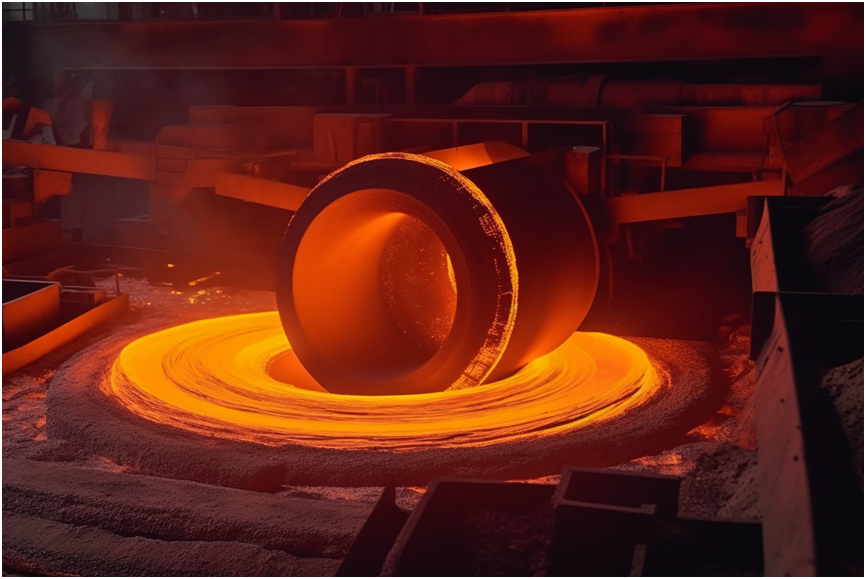The steel industry in 2025 is at the crossroads of global economic recovery and low-carbon transformation. On the one hand, the uncertainty of the global economy has caused market demand to continue to fluctuate; on the other hand, the forced effect of the carbon neutrality policy has accelerated the technological revolution in the industry. In this dual transformation, steel companies must not only cope with short-term market challenges, but also lay out a long-term green future.
Image Source:699.com
1. Market fluctuations under global economic recovery
The global steel market is showing a trend of regional differentiation. According to data from the World Steel Association, global steel production fell by 4.4% year-on-year at the beginning of 2025, but China still dominated, with crude steel production reaching 81.9 million tons in January, although it fell by 5.6% year-on-year. The Indian market grew by 6.8% against the trend, showing the resilience of emerging economies; while traditional steel powers such as Japan and South Korea continued to be under pressure. It is worth noting that the Ukrainian steel industry is recovering from the conflict, with crude steel production in January increasing by 12.3% year-on-year, becoming a new market variable.
This regional differentiation reflects the uneven recovery of the global economy. Fitch Ratings predicts that global apparent steel consumption will achieve low single-digit growth in 2025, mainly relying on the stability of the Chinese market, the expansion of Indian demand and the economic recovery of Europe and the United States. However, the US tariff policy on China and the rise of global trade protectionism still bring uncertainty to the market.
2. Industry transformation under the carbon neutrality policy
China's steel industry accounts for 18% of the country's carbon emissions, and the pressure of emission reduction forces the industry to restructure. The merger and reorganization wave driven by the policy has initially formed a "multi-super and multi-strong" pattern: Baowu Group has become the world's largest steel company through reorganization, and private giants such as Jianlong and Shagang have accelerated integration. This trend of concentration not only optimizes the industrial layout, but also reduces the cost of emission reduction through economies of scale.
Technological revolution has become the key to breaking the deadlock. The first phase of the 1.2 million tons of hydrogen metallurgical demonstration project of Zhangxuan Technology of Hesteel Group has been operating stably, with a metallization rate of 94% at the international first-class level and an annual carbon reduction of 800,000 tons. The project adopts coke oven gas self-reforming technology, with a hydrogen-carbon ratio of 8:1, laying the foundation for 100% green hydrogen reduction in the future. Jiugang Group has obtained a financial credit of 2.6 billion yuan for transformation, which is specifically used for upgrading process equipment. It is expected that the carbon emission intensity per ton of steel will be reduced by 23.77%.
3. Technological innovation reshapes the industrial ecology
Hydrogen metallurgy technology is moving from the laboratory to large-scale application. The Hegang project proves that hydrogen metallurgy can reduce emissions by 70% compared with traditional processes, and the supporting carbon capture system can realize the "waste to treasure" of carbon dioxide. This technological iteration not only changes the energy structure, but also promotes the reconstruction of the industrial chain: the proportion of electric furnace steelmaking is increased, scrap steel resources are recycled, and digital twin technology optimizes the production process to form a "green smart manufacturing" closed loop.
International trade rules are also forcing technology upgrades. The EU carbon tariff has increased China's steel export costs by 6.8%, but there are opportunities in the crisis. Taigang Group's high-end cold-rolled oriented silicon steel project has benchmarked the international advanced level, and Pangang Group has achieved a "good start" in the first quarter through lean management. These cases show that technical strength is becoming a new core competitiveness.
4. Regional synergy and long-term outlook
The regional layout of China's steel industry presents differentiated characteristics. Hebei focuses on digital transformation and low-carbon cluster development, Fujian expands the stainless steel industry chain, and Shanxi and Gansu rely on their resource advantages to extend the supply chain. This "one province, one policy" layout not only avoids homogeneous competition, but also forms a complementary effect.
Looking to the future, the steel industry will show three major trends: greening (popularization of hydrogen metallurgy, application of carbon capture technology), digitalization (smart factories, full life cycle management), and service-oriented (high-end material research and development, industrial chain integration). However, the challenges are still severe: the external dependence of iron ore exceeds 80%, the gap in compound talents, and international trade barriers all need to be gradually broken through through policy guidance and technological innovation.



